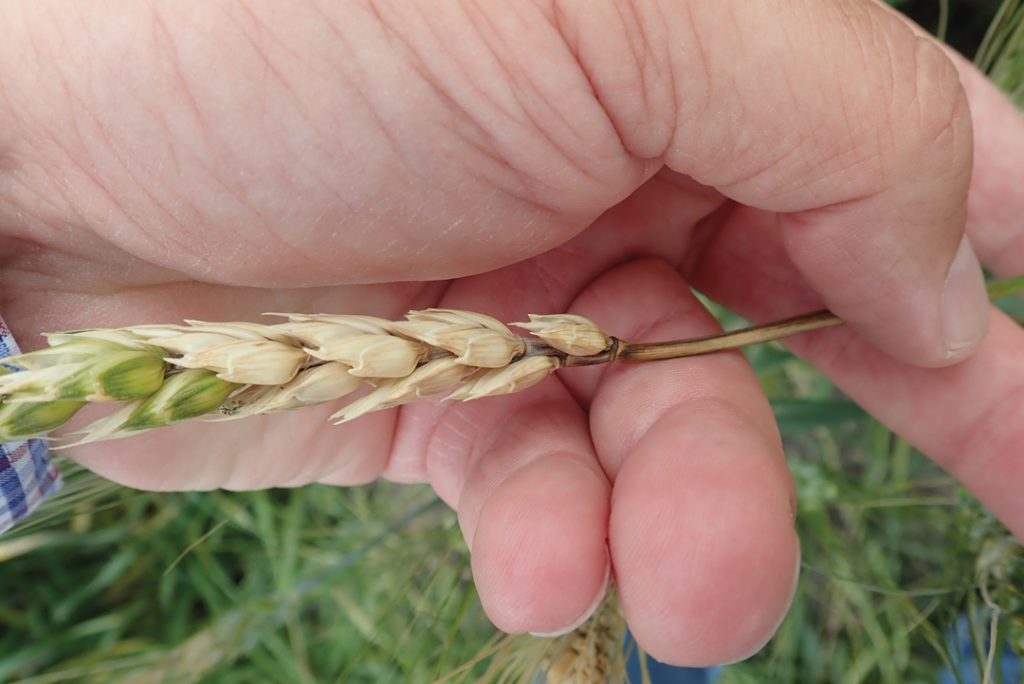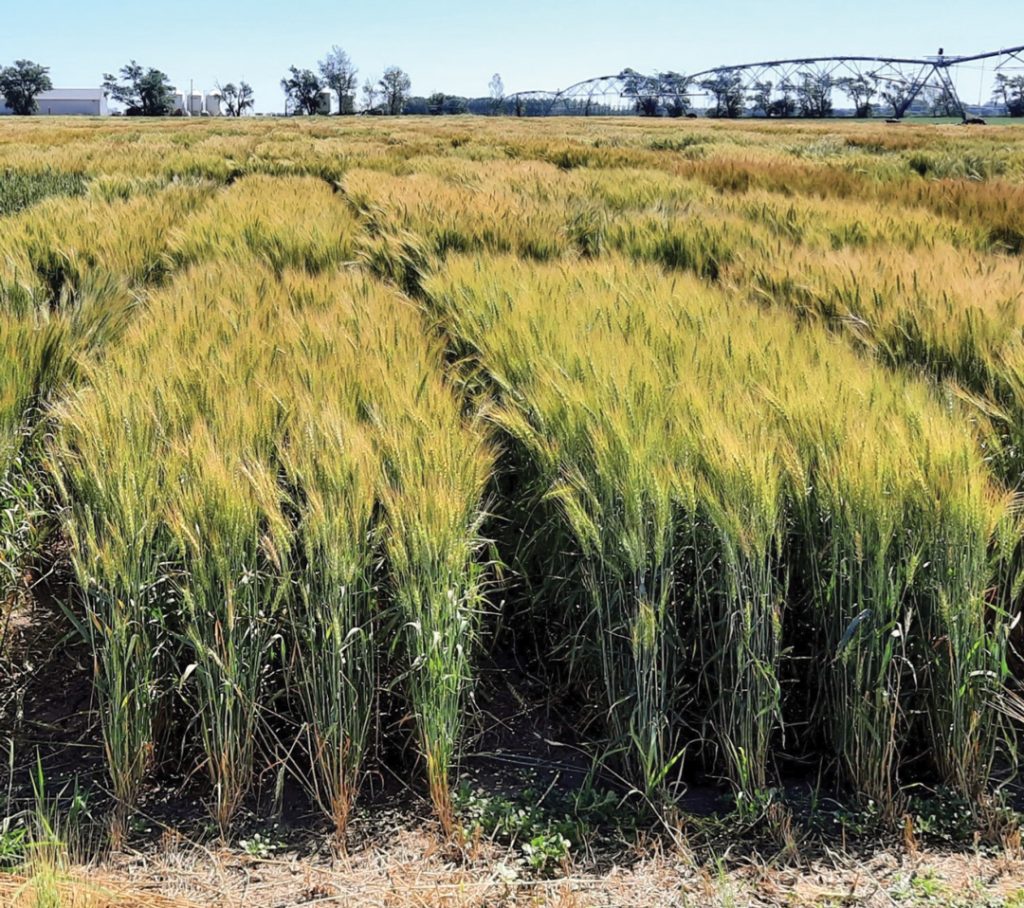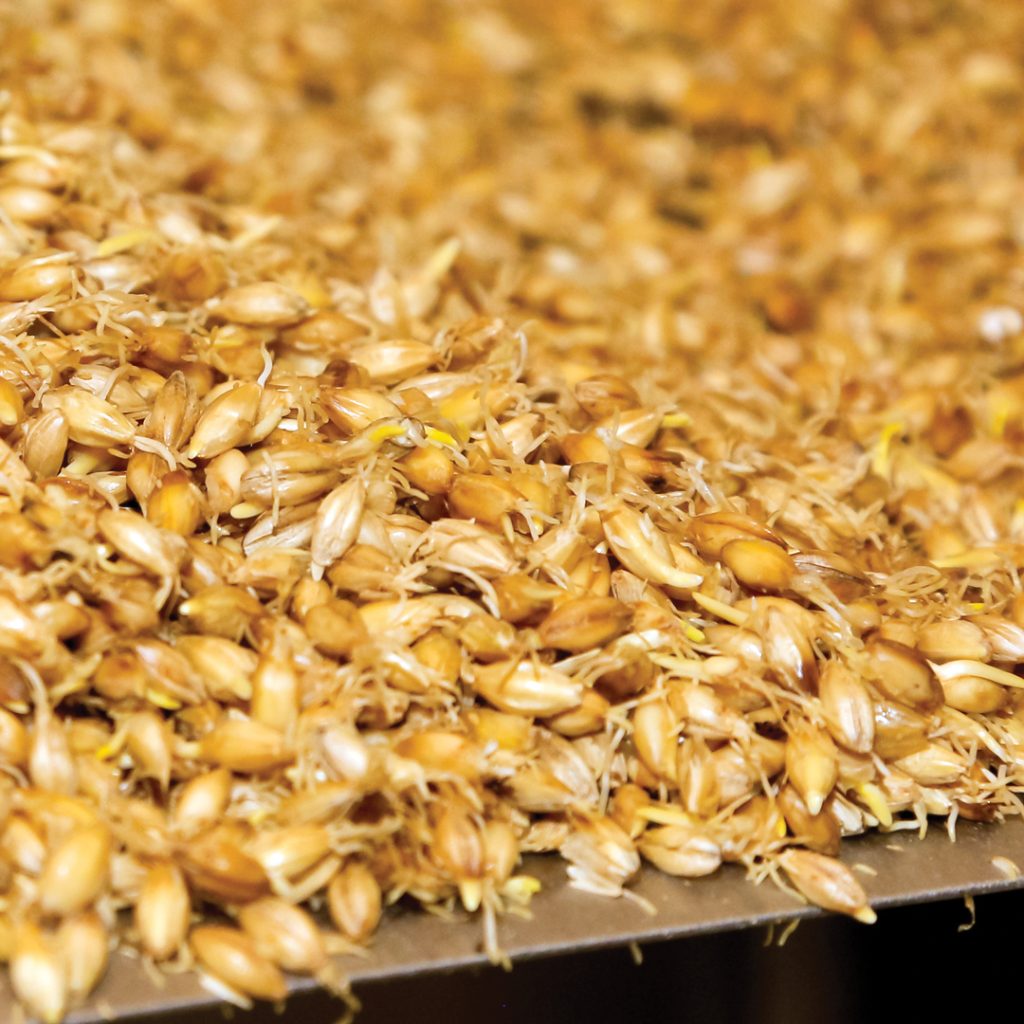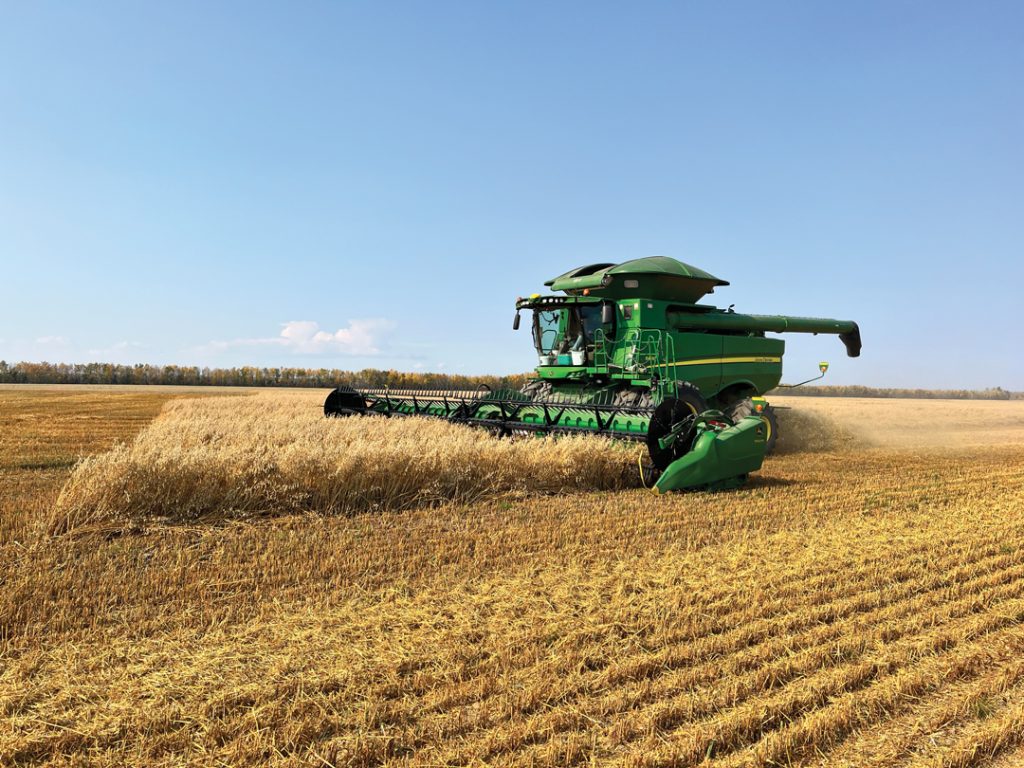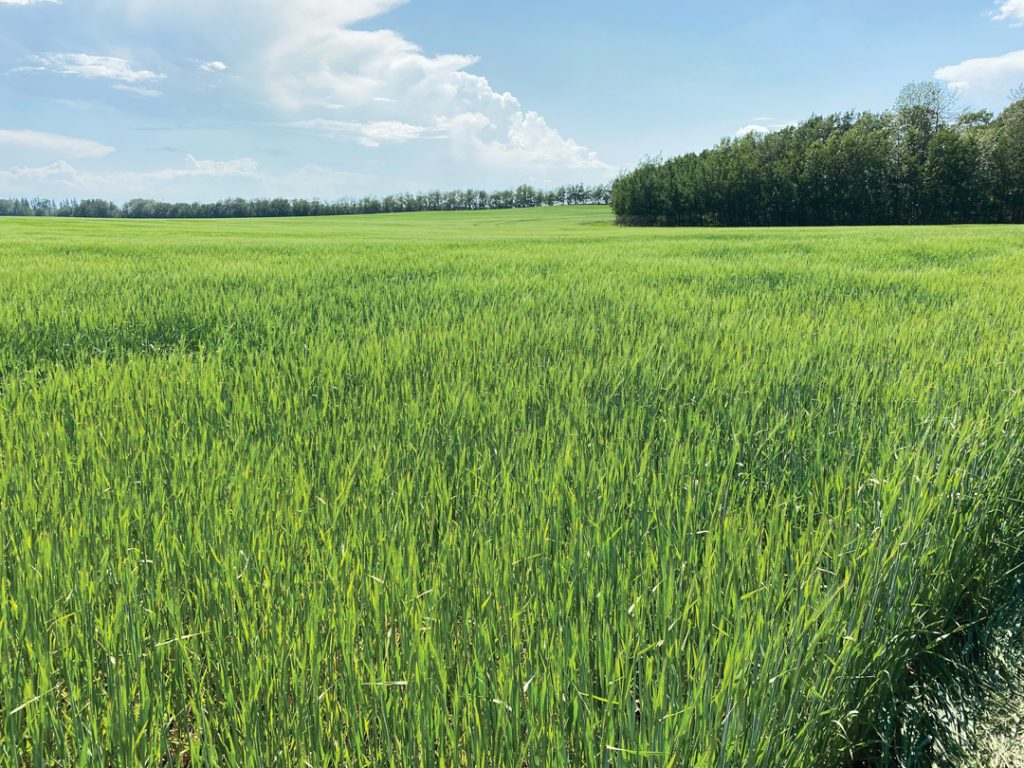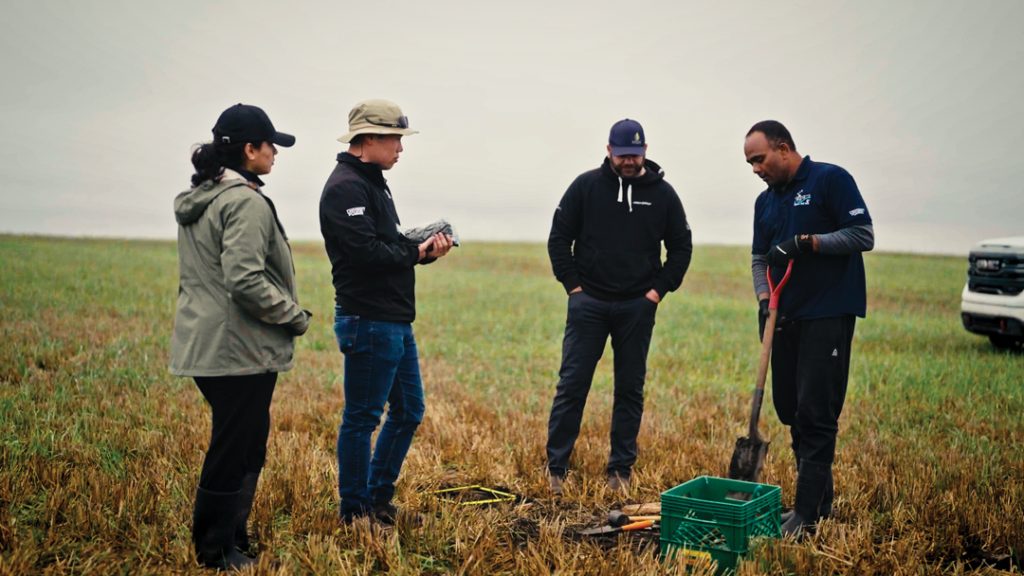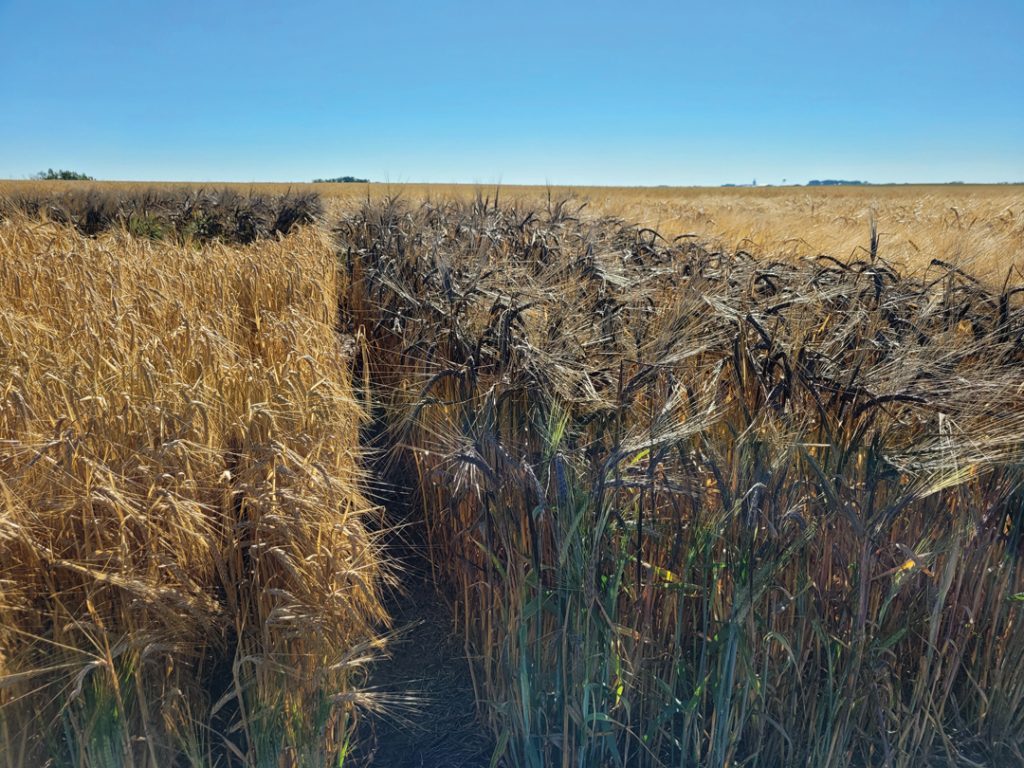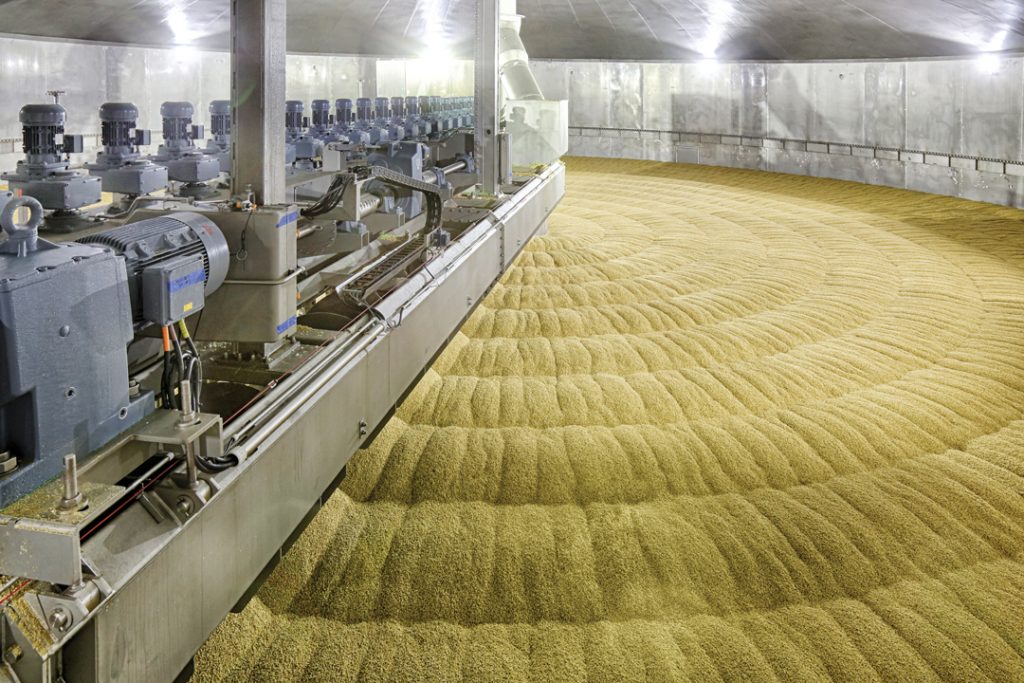REINVENTED RISK MAPS
Available to Prairie farmers on desktop and mobile devices at prairiefhb.ca, the Tool makes daily, localized risk predictions based on weather station data collected over the previous 10 days. The system is active during the peak Fusarium period of June 1 to Aug. 31, and indexes the risk for barley, durum and spring and winter wheat.




